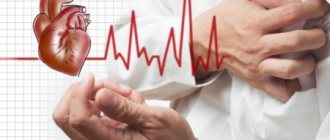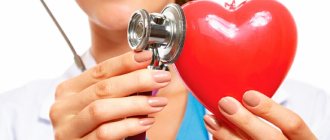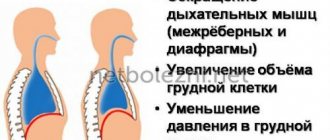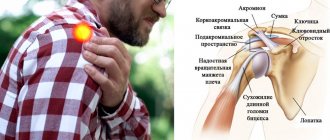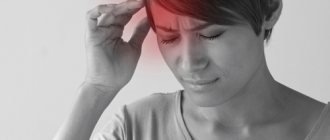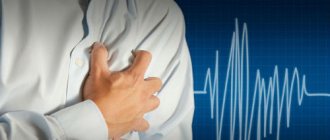What is angina?
Angina pectoris is not an independent disease, but a syndrome that is a manifestation of coronary heart disease (CHD). Coronary heart disease occurs due to insufficient blood supply to the heart muscle. Angina pectoris is a kind of heart signal about oxygen deficiency of the heart. How does the heart give this signal? The signal is felt in the form of attacks of short-term sudden acute squeezing, pressing, burning pain in the region of the heart. In some patients, the pain is accompanied by a state of general discomfort, a feeling of lack of air, and interruptions in the functioning of the heart.
What triggers an angina attack?
At first, attacks can be mild, short-term, 1-2 minutes each, during very heavy or intense physical activity, running, climbing stairs, going out into the cold, walking against the wind. An attack can be triggered by emotional disorders, smoking, staying in a stuffy space, overeating, taking energy tonics or excessive doses of alcohol.
How to distinguish angina from myocardial infarction?
| Typical angina pectoris | Typical myocardial infarction |
| Pain in the center of the chest, in the middle third of the sternum, can spread to the left arm, shoulder blade, lower jaw, and upper abdomen. | The pain is similar to that of angina pectoris, but more often it is felt as more intense, unbearable, tearing and affects the entire left half of the chest. |
| Discomfort is mild or moderate. | Severe discomfort, increased sweating, dizziness, nausea, increasing feeling of lack of air, fear of death. |
| An attack of angina is more often associated with previous physical activity or emotional arousal. | Myocardial infarction can occur at any time, including at rest. |
| The pain attack takes about 3 – 15 minutes. | A painful attack with discomfort and suffocation lasts for at least 15 – 30 minutes or more, and there is a tendency for symptoms to increase. |
| With rest, the pain usually goes away. | In a state of physical rest, the pain does not go away completely and intensifies when talking and deep breathing. |
| The use of nitroglycerin under the tongue or in the form of an aerosol from 1 to 3 doses interrupts an attack of angina. | Symptoms do not completely resolve after 3 doses of nitroglycerin. |
conclusions
The appearance of sharp cardiac pain and an attack of shortness of breath indicates a completely different pathology. At a young age, difficulty breathing and discomfort in the heart area are associated with hormonal changes, mental lability, and psychosomatic disorders. Women during menopause also experience shortness of breath and attacks of cardialgia. Sharp, intensifying chest pain and severe difficulty breathing indicate acute cardiac pathology, and therefore every patient with similar symptoms is advised to undergo a diagnostic examination followed by treatment by a cardiologist.
First aid for an angina attack
If an angina attack occurs, you must follow the instructions received from your attending physician or (if there were no such instructions) follow the algorithm:
- Note the time of onset of the attack.
- Measure blood pressure, heart rate and pulse.
- Sit (preferably in a chair with armrests) or lie in bed with the head of the bed raised.
- Provide fresh air (free your neck, open a window).
- Take acetylsalicylic acid (aspirin 0.25 g), chew the tablet and swallow.
You should not take acetylsalicylic acid (aspirin) if you are intolerant to it (allergic reactions) and have already taken it that day, as well as if there is a clear exacerbation of gastric and duodenal ulcers.
6. Take 0.5 mg of nitroglycerin. If in the form of a tablet, put it under the tongue and dissolve; if in the form of a capsule, bite it, do not swallow; if in the form of a spray, inhale (inject) one dose under the tongue without inhaling.
If, after taking nitroglycerin, severe weakness, sweating, shortness of breath, or a severe headache appears, then you need to lie down, raise your legs (on a bolster, pillow, etc.), drink one glass of water and then do not take nitroglycerin.
You should not take nitroglycerin if you have low blood pressure, severe weakness, sweating, severe headache, dizziness, acute impairment of vision, speech or coordination of movements.
7. If the pain has completely disappeared and the condition has improved after taking aspirin and 1 dose of nitroglycerin after 5 minutes, limit physical activity and discuss further treatment with your doctor.
8. If the pain persists for more than 10-15 minutes, you must take nitroglycerin a second time and urgently call an ambulance!
ATTENTION ! If aspirin or nitroglycerin is not available and the pain persists for more than 5 minutes, call an ambulance immediately!
9. If pain persists even after taking the second dose of nitroglycerin after 10 minutes, you need to take nitroglycerin a third time. Wait for an ambulance.
Causes of pain in the heart and head
The main signs of cardiac dysfunction are pain in the chest, in the ribs, as well as shortness of breath, sweating, rapid heartbeat and arrhythmias, and a sharp deterioration in well-being. These symptoms may indicate acute or chronic heart disease. However, it is important to distinguish some diseases from heart failure. They also cause pain in the heart area, but are associated with pathologies of other organs.
Inflammatory heart diseases
Inflammatory heart diseases are often of infectious origin. Some viruses (adenoviruses, enteroviruses, herpesviruses, cytomegaloviruses and others, as well as their combinations) multiply in the tissues of the heart and cause severe pain. The process can also be caused by allergic reactions, autoimmune processes, accumulation of poisons and toxins in the body. During diagnosis, the nature of the inflammation and its exact localization, as well as other disorders caused by diseases, are determined.
- Myocarditis is inflammation of the myocardium, the heart muscle. This is a dangerous condition that manifests itself as sharp pain in the heart area. They occur at any time of the day, regardless of physical activity.
- Pericarditis is inflammation of the pericardium, the lining of the heart. The main symptom is severe, aching pain in the central part of the chest; sensations can radiate to the neck, back, and upper limbs. First, dry pericarditis develops, in which inflammation occurs without the formation of effusion. It is accompanied by a general deterioration in health, soreness and a dry cough. Then a more dangerous form may develop - effusion pericarditis. The pericardial cavity fills with fluid, which negatively affects blood circulation and can lead to dangerous consequences.
For pericarditis and myocarditis, taking nitroglycerin does not provide relief. This is the first sign that requires urgent medical attention. Inflammatory heart diseases lead to acute cardiac dysfunction and require treatment in a hospital setting.
Cardiac ischemia
Coronary heart disease is a common disease that occurs when there is insufficient blood supply to the myocardium. Due to damage or disease of the coronary arteries, the heart receives less oxygen than is necessary for its normal functioning. The heart muscle constantly works under increased load, which leads to a gradual decrease in its strength and elasticity.
One of the signs of exacerbation of coronary heart disease is an attack of angina. It lasts no more than 5 minutes, but is accompanied by a very vivid clinical picture. A person exhibits the following disorders:
- sharp, squeezing pain behind the sternum, which can radiate to the arm or back;
- a sharp deterioration in health, weakness, nausea, headache;
- rapid heartbeat, increased sweating;
- feeling of fear.
During an attack of angina, you must take nitroglycerin. It helps normalize heart function and relieves pain. It is also important to give up physical activity and bad habits until complete recovery - they can provoke another manifestation of angina pectoris.
Myocardial infarction
Myocardial infarction is one of the complicated forms of coronary heart disease. It is caused by partial or complete cessation of blood supply to a separate area of the myocardium, which leads to its necrosis. This is a dangerous condition that threatens the patient's life and requires emergency medical attention. A person experiences acute pain in the heart area, but it can also have an atypical location. Thus, many patients experience pain in the back, neck, upper limbs or head. A heart attack may be accompanied by symptoms of heart failure, including a dry cough, tachycardia, arrhythmia, and the appearance of sticky sweat.
Diagnostics is necessary to determine the cause of myocardial infarction and the degree of its danger to the patient. It can be caused by the following pathologies:
- atherosclerosis of the coronary arteries - a disease that leads to the deposition of cholesterol and some fractions of lipoproteins on the vascular walls, as well as the formation of plaques and blood clots;
- consequences of surgical intervention - some patients require ligation of the artery or its excision;
- embolus, which partially or completely blocks the lumen of the artery - gas, fat, thromboembolism and others are distinguished;
- a sharp spasm of blood vessels, which leads to blocking the access of blood to the myocardium.
At the first signs of a heart attack, you should immediately seek medical help. If the blood pressure is normal or low, the patient can be given aspirin to chew. Nitroglycerin is taken only in cases of high blood pressure. Until doctors arrive, the person must remain in a sitting position and loosen tight clothing, cuffs and collars. The hospital provides complex therapy aimed at relieving pain, resolving blood clots, improving the condition of the coronary arteries and restoring blood supply to the myocardium.
Other heart diseases
During diagnosis, various heart diseases may be detected, which cause sharp pain in the chest and head. Among them there are congenital and acquired pathologies, metabolic disorders, and consequences of an unhealthy lifestyle. Each disease of the cardiovascular system requires an individual approach to treatment.
- Arrhythmias are a common disorder that can have a number of manifestations. Its forms include tachycardia, bradycardia, and uneven heart rhythm. To normalize heart function, a therapeutic diet, moderate physical activity and medication are recommended.
- Heart defects are often congenital disorders. They are associated with abnormal structure of the heart valve apparatus or important vessels. The danger of defects is that they may not cause any symptoms for a long time. However, stress, irregular rest, and intense physical activity lead to acute chest pain and cardiac dysfunction.
- Pulmonary embolism is a serious condition that threatens human life. It manifests itself with symptoms similar to a heart attack. The pain is concentrated in the chest area and intensifies during inspiration. Taking nitroglycerin does not lead to improvement in well-being, so urgent hospitalization is necessary.
Doctors recommend undergoing routine examinations, which also include diagnosing heart conditions. Many diseases do not cause alarming symptoms in the initial stages, but in the future they can progress and threaten the patient’s life. Pain in the area of the heart and head, even if it quickly goes away on its own, is one of the signs for which it is important to obtain timely consultation with a cardiologist.
Non-cardiac diseases
Despite the fact that pain in the heart area clearly indicates pathologies of this particular organ, it can also be associated with other disorders. Thus, an attack of angina is often confused with intercostal neuralgia, due to the high intensity of pain and similar localization. There are several diseases in which a similar clinical picture appears, but their cause will be pathologies of other organs.
- Osteochondrosis of the thoracic spine is a chronic disease associated with a decrease in the strength of the intervertebral discs. Narrowing of the intervertebral space is the reason why neighboring vertebrae put pressure on nerves and blood vessels. This leads to acute pain concentrated behind the sternum, as well as numbness in the left or both arms.
- Intercostal neuralgia is pain caused by inflammation or mechanical compression of the intercostal nerves. Despite the similarity of symptoms, there are also differences with angina pectoris. Thus, with intercostal neuralgia, the pain intensifies during deep breaths, sudden turns and movements. Also, a person can accurately point to the painful area, but with angina, the pain spreads to the entire chest.
- Diseases of the central nervous system are the cause of pain in the heart, numbness of the upper extremities, shortness of breath, coughing, sweating and other typical symptoms of acute cardiac dysfunction. However, no changes are detected on the cardiogram, which may indicate a neurotic state.
- Lung diseases are another cause of pain in the heart and head. They appear with pneumonia, pleurisy. However, the pain intensifies only during inspiration and is often accompanied by fever and other typical symptoms.
It is impossible to determine the exact reason why your head and heart hurt at home. In addition, many patients experience fear when discomfort appears in the chest area, which makes it difficult to objectively assess the general condition. Only a complete examination will help determine what caused the pain, as well as select effective treatment.
Diagnostics
A comprehensive examination begins with a general practitioner or family doctor. The specialist conducts a physical examination and identifies the leading pathological syndrome, and if necessary, sends the patient for consultation with specialized specialists (pulmonologist, cardiologist). To establish a diagnosis, the results of instrumental and laboratory tests are necessary, of which the following are most often prescribed:
- X-ray of the OGK.
Radiation diagnostics helps to differentiate cardiac and pulmonary pathology. Damage to the respiratory system is manifested by focal infiltrates, rounded shadows, and increased vascular pattern. Signs of cardiac problems are changes in the size and configuration of the heart shadow, congestion in the lungs. - Electrocardiography.
An ECG evaluates the electrical activity of the myocardium. The cardiogram reveals a decrease in the voltage of the waves or their inversion, deviation of the heart axis, and signs of disturbances in the myocardial conduction system. Daily ECG monitoring and bicycle ergometer test are of great diagnostic value. - Echocardiography.
Ultrasound diagnostics shows structural and functional abnormalities in the activity of the heart. The method is necessary for diagnosing pericarditis (effusion in the heart sac), cardiomyopathy (expansion of cavities or thickening of the walls of the organ). EchoCG allows you to measure the contractile function of the left ventricular myocardium. - Invasive methods.
In case of pathological processes in the pericardium, a diagnostic puncture is performed for bacteriological and cytological examination of the exudate. In case of coronary artery disease, coronary angiography is performed to assess the extent of vascular damage. The functional state of the myocardium is determined by perfusion scintigraphy. - Laboratory diagnostics.
Analyzes are of auxiliary value. In case of cardiac pathology, an extended biochemical study is indicated with determination of the lipid spectrum and acute phase parameters, measurement of myocardial markers. Diagnosis of pulmonary diseases requires microscopy and sputum culture.
Echocardiography
Treatment
Depending on the diagnosis, adequate therapy is selected. Possible treatment:
- taking analgesics;
- antibiotic therapy for tuberculosis, pericarditis, peptic ulcer, bacterial pneumonia;
- tranquilizers for neurosis;
- antacids for gastritis and peptic ulcers;
- nootropics and antispasmodics for neurocirculatory dystonia;
- surgical treatment of herniated intervertebral discs, aortic aneurysm;
- nitroglycerin for an attack of coronary heart disease;
- motherwort or valerian for stress;
- non-steroidal anti-inflammatory drugs for pericarditis.
The causes of nagging pain do not always have serious consequences. But this condition itself is unpleasant, so it is worth visiting a doctor to prescribe adequate therapy.
Read also: My heart aches
Dear patients! Remember that only a qualified doctor can make an accurate diagnosis, determine the causes and nature of the disease, and prescribe effective treatment. You can make an appointment with our specialists or call a doctor at home by calling 8-(4822)-33-00-33
Be healthy and happy!
Preventing the risk of heart disease and heart attack
The best way to prevent a heart attack is to reduce any risk factors.
You can reduce your chances of having a heart attack:
- weight loss if you are obese or overweight
- treating high blood pressure and high cholesterol by consulting your doctor
- Controlling diabetes through diet, medications, and blood sugar control
- Eat a diet rich in fresh vegetables and fruits, low in saturated fats and processed foods
- quit smoking
- limit your alcohol consumption!
- at least 2-3 hours of moderate physical activity per week
Also, get regular checkups with your doctor. Regular screenings can help identify new risk factors for heart disease that a person may develop and monitor any existing ones.
Heart attacks are a medical emergency. Knowing the signs and symptoms of a heart attack can help a person get the help they need as early as possible. Reducing risk factors for heart disease can help a person prevent a heart attack.
